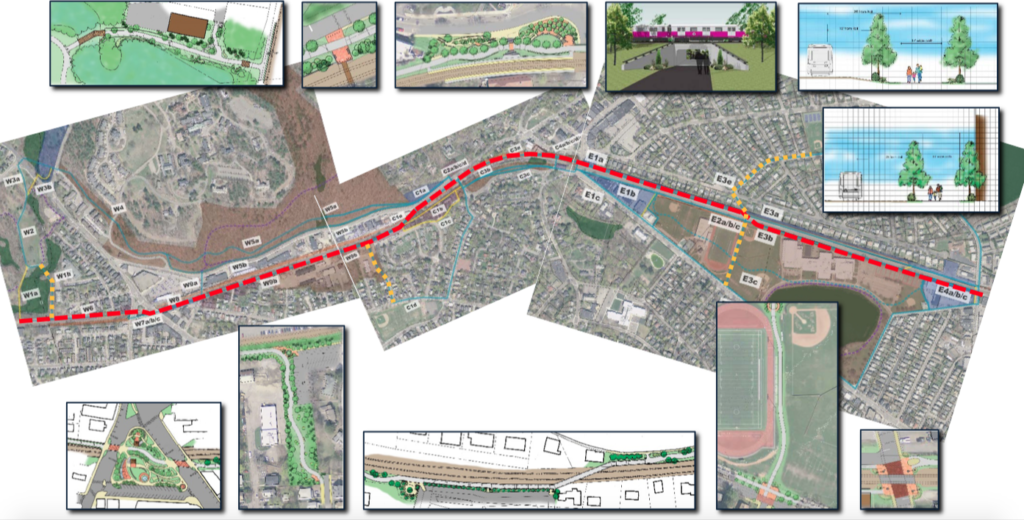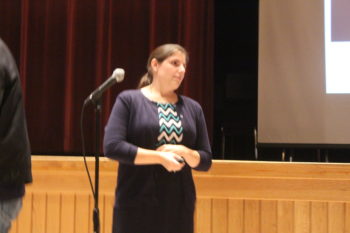Photo: Chris Leino, chair of the Community Path Implementation Advisory Committee.
After more than a quarter century since the idea was first introduced, the concept of a pedestrian and bike path running through the town took a major step forward as the Belmont Board of Selectmen voted unanimously to recommend a proposed $27.9 million route advanced by the five-member Community Path Implementation Advisory Committee at the board’s meeting held Monday, Dec. 4 at Town Hall.
“In my view, this is really an amazing opportunity for Belmont. I think the community path if constructed would be a fantastic crown jewel for [the town] … and an amazing resource for Belmont and surrounding communities,” said Russell Leino, chair of the Advisory Committee which spent nearly three years both devising a process and then leading a year-long feasibility study which analyzed countless byways which would connect Belmont with a proposed 104-mile Mass Central Rail Trail running from Boston to Northampton.
“This is the path we need to endorse,” said Selectman Mark Paolillo, the committee’s liaison to the committee.
“It has gone through endless public meetings, a significant amount of input from all stakeholders … we have reached an answer that this board needs to support as a way forward,” said Paolillo.
The unanimity of support from the town’s executives was the validation Leino was seeking as the project now moves forward to the critical funding phase.
“I’m really excited because this is an important step forward for this project. [T]his vote is really the end of the beginning and now we need to move forward on both funding and construction,” Leino told the Belmontonian after the meeting.
The committee’s timeline for the roughly two-mile project includes funding for preliminary and final design in 2018, secure construction funds from state and federal agencies by 2019 and construction in 2020 and 2021.
The suggested route – running from the Waltham line outside Waverley Square and connecting to an existing travel path at the Cambridge border – was not a surprise as it was unveiled early in November during the final meeting of the 10-step feasibility study process run by PARE Consulting that spent more than a year conducting meetings, walking tours and public forums.
“Our consultant [PARE’s Amy Archer] did an incredible job. Her comprehensiveness and demeanor was exceptional and made the process successful because she was so good at engaging the public and listening to feedback and reacting to it in a calm and reflective way,” Leino told the Belmontonian.
“There weren’t any knee-jerk decisions and the way the [recommended] path [was evaluated] was done in a very deliberative way by going over the criteria over and over again,” said Paolillo.
Selectman Adam Dash successfully proposed adding language in the declaration that will allow the board and town to “tweak” the recommended path when the project encounters “the inevitable” unexpected delays and possible disputes with landowners.
One area that will need to be negotiated is in Waverley Square where developer Joseph DiStefano is proposing constructing commercial space along Trapelo Road – to be revealed in the first quarter of 2018 – that will be adjacent to the bike path. DiStefano, who attended Monday’s meeting, said he is willing to begin discussions with the town on accommodating each other’s interest.

